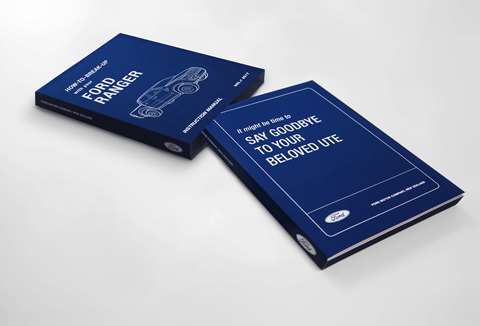The power of print at a glance
- New tools and currencies are shedding a light on the behaviours of mail responders who do not immediately commit to a purchase
- Measuring mail against brand effects will unlock new creative opportunities
The proliferation of digital media means marketers can access data and technology like never before; tools that should empower brands and agencies to make informed and unbiased decisions. All this, yet marketing as an industry continues its obsession with the short term. So much so, that the capacity of one channel to make an impact beyond immediate sales is often neglected, while at other times dismissed entirely.
Take direct mail, a channel judged mostly on absolute sales metrics, often without a thought for brand effects.
In the words of Gavin Wheeler, chief executive of WDMP and non-executive director at the DMA Group: “When we talk about direct mail, we talk about the 1% who respond, but never the 99% who don’t.”
One survey by the IPA and ISBA shows that 75% of marketers and 73% of agencies agree that short-term tactical needs often take priority over longer-term objectives. As few as 14% of marketers and 4% of agency execs strongly agree that marketing objectives focus on the long term (defined here as one to three years), while 59% of marketers and 34% of agencies strongly agree they have a short-term (one-to-six-month) plan in place.
This short-sightedness doesn’t only devalue campaigns that create mental brand equity, influence future sales or prime consumers emotionally, it obscures the power of some channels, and in this case mail, to achieve both brand and activation effects.
Direct mail, beyond the sale
Now, with the introduction of JICMail and the acknowledgment that direct mail goes beyond pure sales, we’re moving closer to the 99%. In the same way other media is judged by reach, frequency, dwell time and engagement levels, we could soon witness a sea change in the way mail is received.
Findings that reveal that, on average, 51% of all mail, whether addressed or door drop, is read immediately – with a further 19% followed up on at a later stage – are important.
Each piece that enters the home is revisited, on average, 3.8 times, while 21% of all addressed mail drives a commercial action. On day one, nearly two-thirds of items are read, after a week 45% are discussed, after two weeks we see online traffic, after three a store visit, and after the full 28 days, around 6% of users plan a large purchase.
“What I like about JICMail data”, says Ian Gibbs, director of data leadership and learning at JICMail, “is that it proves this halo effect of effectiveness beyond simple response metrics. It drives website visits, calls to the advertiser, more brand style effects than you might otherwise give it credit for. So once people begin to understand and accept this, I think it’ll be clear what it can contribute as part of a multimedia campaign.”
Wheeler underlines the limitation that mail has mostly been judged against sales metrics alone. It’s why, he suggests, the format often keeps to very tight, often formulaic constraints. Think insurance renewals in a C5 envelope, on an A4 letter and with a Johnson box in the righthand corner.
“There is a formulaic approach to direct mail that works because it’s a channel that has been massively optimised over the last three decades,” he continues. “If marketers begin to factor in brand-style effects in the wake of JICMail, considering how it moves engagement, consideration, etc., then I think we’ll see more creative executions through our letterboxes.”
Thinking outside the (letter)box
Already, brands are testing the bounds of the mail formula and tapping into wider response effects with more creative, and costly, executions.
Thames Water unleashed a series of targeting mailings last year, asking customers to stop disposing of wet wipes, cotton buds, cooking fat, etc. down their drains – oblivious to the eventual blockages and financial cost they cause.
The first mailings featured a gruesome front cover photograph of a fatberg, brought to life through the creative use of prints, inks and varnishes. The sensory execution felt slimy – nasty even – and resulted in a 26% reduction in sewer blockages.
Ford and JWT New Zealand used direct mail marketing to convince a nation of ute obsessives – utes are utility vehicles, or pick-up trucks – to finally let their current model go and trade up to a top-spec Ranger Wildtrak. The item imitated a break-up manual and was designed to give petrol heads the emotional support they need. It even included a few tissues to wipe away the tears and really tapped into the tactility, intimacy and authenticity sometimes lacking in digital.
“These more expensive, creative formats don’t always pay off on a pure sales perspective,” admits Wheeler. “But if you want to do something that drives brand effect then you can afford to be more creative.”
One piece of work Wheeler and co carried out for the Carbon Trust sparked conversation among corporate decision-makers with an elegantly designed, disruptive execution. Albeit one that would simply cost too much for a mass audience.
“We sent them a box of bamboo dominoes [a not-so-subtle nod to the domino effect] in the hope executives might follow up with a call to a Carbon Trust consultant on how to reduce emissions in their supply chain.”
A left-of-field approach to the vanilla subject of supply chain emissions drew attention to the subject at hand and drummed up leads for the sales team. Altogether, the campaign doubled the previous best conversion rate and exceeded the target for appointments (by 20%) and request for information (by 35%).
These campaigns are just the first of a new breed of direct mail in the post-JICMail age. A breed that steps away from the sales-focused, over-optimised parameters of yesteryear and begins to consider, if not for the first time, how direct mail can achieve both brand and activation effects.





